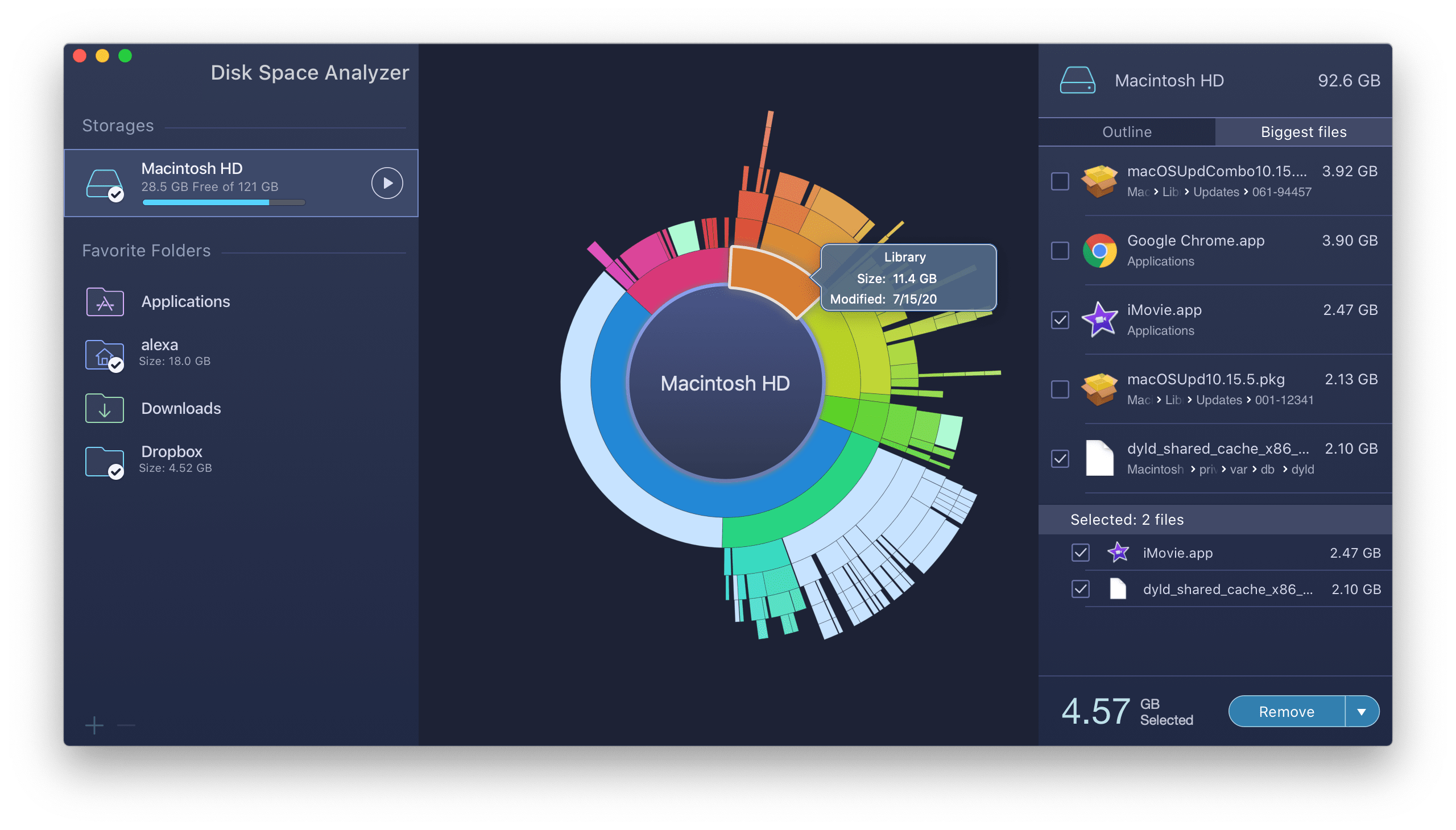

Many others aren't the slightest bit important, even though the OS insists you can't remove them. While you may never use it yourself, many OS apps and the OS itself use it to perform certain functions in the background. Do you think there is any risk that this would delete important Application files that did not exist anywhere else?īe very careful with those types of decisions, or you may end up having to reinstall the OS, or restoring a backup. Click on the second filter and choose is greater than. Click on Kind filter and select Other, then select File Size from the attribute list.
#View all files on mac by size mac os
Backup what you want to, or need to save and then empty the folder. This works to locate large files and items in all versions of Mac OS X: From the Mac OS Desktop, open any new Finder window. Since the Downloads folder is just that, files you have downloaded, they don't belong to the OS in any way. This is on the basis that if of any importance they will have been saved elsewhere. I propose to delete large files that are in the root of the Downloads folder. You can then of course sort by size to find the largest, and then by name to have duplicates appear right next to each other. doc as part of their name will be listed. doc, there's no need to enter both as a search phrase. Question: Mac Geek Gab listener Daryn writes, I recently have been trying to figure out if there’s a way to see the size of a directory when using Terminal in Recovery Mode. To confine your search, you would do this for Word documents: Whatever you select, it will automatically search all nested folders from that location inward. Then choose the folder you want to confine the search to, such as your user account, or the Documents folder within that.

Go over to the top right and change the drop down menu to Select, or press Command+L. You can tell EasyFind to search by location.

If Outlook didn't require Spotlight to be active in order to return searches within itself to find emails, I'd have Spotlight disabled on my entire Mac. I have all but one drive set as Private in the Spotlight preferences. It did realize why Find wouldn't show me a large number of Word documents I expected to see. It's not as fast as Spotlight since it's a brute search type of app that has to read the file tables of each drive and collect their paths for display, whereas Spotlight grabs everything it needs from the indexes it creates. I look for files and folders, so EasyFind is much better suited to that task. Spotlight is great if you are a writer, researcher or such and routinely need to find text within your documents. It won't show you anything in the System or root Library folders, or any hidden folders unless you add the choices to include those areas of the drive. That carries though to the Find function. Though the later is now chosen when you create an account where you want that user to have less overall access. No drive icons showing, less used menu choices hidden, etc. The default is still what used to be called "Simple Finder". Aimed mostly at folks who are new to computers. Why does Apple create these restrictions?Īpple has, well, since pretty much forever, set up the Mac OS's default behavior to be the simplest, least likely way to get yourself in trouble as possible.


 0 kommentar(er)
0 kommentar(er)
